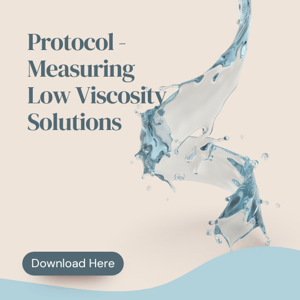Water and low viscosity samples can be tricky to work with. Low viscosity can be a subjective value but in this post, we are referring to viscosities around 1 cP. As discussed in many papers and previous blog posts, while water may be taught as a universal solvent, we have found that water may not always be the best solution to use as a standard or a cleaning solvent. With this information, we strongly recommend working with NIST traceable mineral oil or NIST traceable mineral water based standards for verification and also exploring alternative cleaning solutions.
However, in the case that there is a validation requirement or a previous process was set in place prior to, we do have some general recommendations on dealing with water or low viscosity solutions (1 - 2 cP). At the end of this article, we will also share the full application note and infographic you can use to guide you and your labmates for successful measurements.
Most common problem: The most common problem is normally that bubbles are created as the water or low viscosity solution is flushed through your various instruments including our VROC technology. Bubbles can be created in the middle of a measurement or can also be introduced if using other common lab tools such as pipettes.
When it comes out our VROC technology and viscometers, how would you know if bubbles are created or trapped? There are lab instruments in many labs that can actually be damaged due to bubble formation. With VROC technology, bubbles will not damage the chip. If bubbles are trapped in the rectangular slit, there are two indicators:
1) Review the rsquared values to see how good the linearity of the pressure profile is. Trapped air bubbles would distort the linearity so anything less than 0.996 may indicate bubbles
2) Repeatability of your viscosity measurements is varied - if there are bubbles, since the bubbles would transfer throughout, you may not be able to get repeatable measurements.
Download the latest infographic!
Download the full protocol on measuring water and low water based calibration fluids here:


